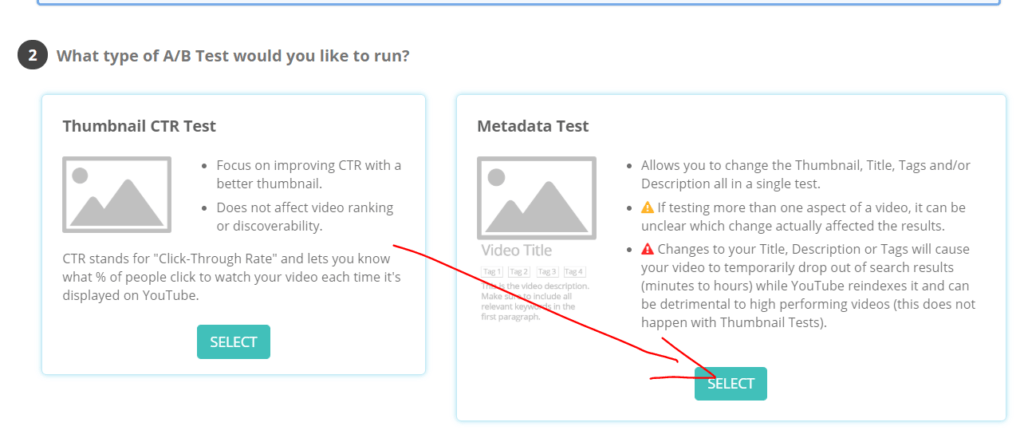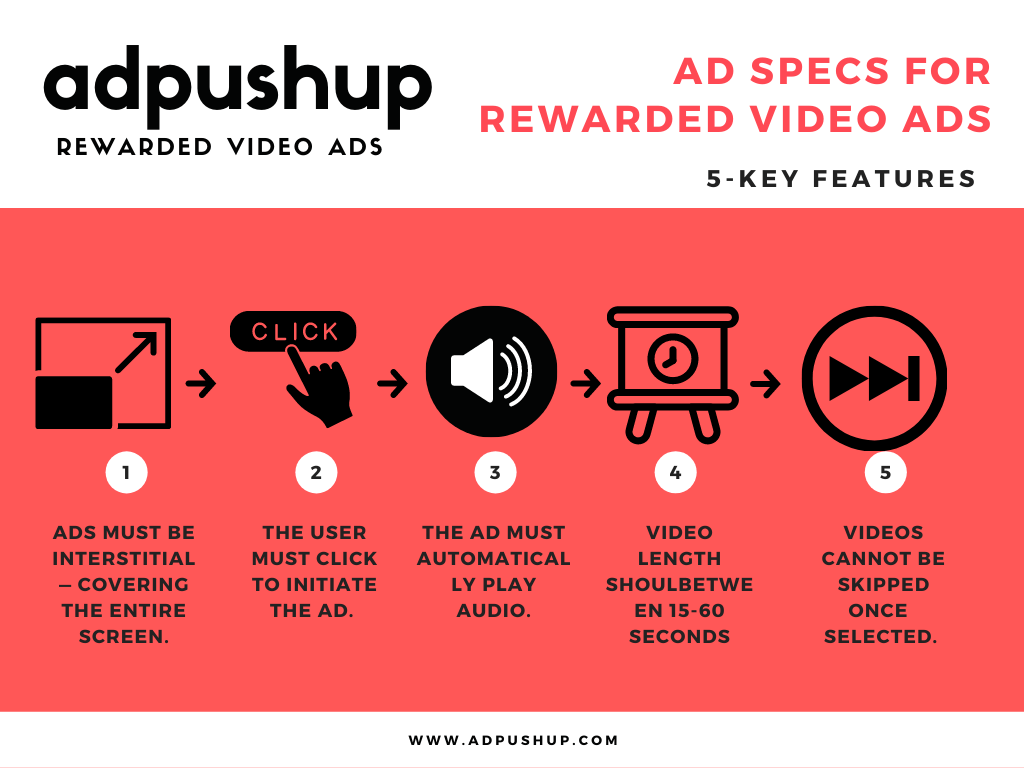Here is an overview fort the best practices for rewarded video ads for publishers to follow in 2023 and beyond.
In the ever-evolving landscape of digital advertising, Rewarded Video Ads have emerged as a game-changer for publishers seeking effective and user-friendly revenue generation strategies. Whether you’re a web publisher or an app developer, leveraging rewarded video ads have become a top priority, thanks to their proven track record of success.
Publishers are increasingly acknowledging the tremendous benefits of incorporating rewarded video ads into their monetization strategies. Particularly in the gaming industry, these ads have taken center stage, with a staggering 90% of gaming apps employing them as the “hottest revenue generator” in the market
Today, we’ll talk about another amazingly powerful ad format: Rewarded Video Ads.
It is an incredibly effective way of delivering user-friendly ads and building your brand.
What are Rewarded Video Ads?
Rewarded video ads are ads which users can watch in exchange for some incentives – an extended free trial, extra coins or goodies in the games, a puzzle hint, or access to some exclusive features or content.

For example, if users are playing a mobile game, they can be rewarded with in-app virtual currency for watching a full-screen ad for 15 to 30 seconds. These ads are non-skippable, but there’s usually an option to opt out of this type of advertising.
Rewarded video ads are gaining momentum because they offer an honest value exchange – a user views an ad for a specific time duration and receives a premium gift.
Typically, people dislike in-app ads because they interrupt the user experience. However, when there is an exchange of value, the experience becomes less intrusive and more rewarded.
In short, rewarded video ads are:
Rewarded Video Ads Trends for 2023 and Beyond
Our research into rewarded video ads statistics suggests that rewarded ads will be a great way to grow your revenues, not just this year but in the future.
Here are some stats:
- 71% of video game players prefer in-game video ads over the in-app purchases
- 62% of developers saw user retention increase after introducing rewarded video ads
- 52% of mobile game developers call rewarded ads to be their most lucrative type of in-game advertising
- Rewarded video ads can be 2X more effective than interstitial videos.
So, what’s it all mean?
Rewarded video ads will continue to evolve. It’s time to start using this as a format so you can keep up.
How Does a Rewarded Video Ad Work?
For the best rewarded video ads strategy, you should know first how it works. Here’s a three-step process on how rewarded ads work:
- Rewarded Video Ad Offer:
An in-app event triggers a pop-up of a video app. The pop-up offers the app user to watch a video in exchange for a virtual gift.
- Watch the Ad:
The user can either dismiss the offer or choose to watch the ad for a specific amount of time (5 seconds to 30 seconds) to get the premium reward.
- Earn the Reward:
Once the ad ends, the viewer gets the reward and continues using the app.
Also Check: Guide To Create Video Ads That Convert
6 Best Rewarded Video Ads Practices
Now that you know how they work, let’s take a look at the best rewarded video ads practices.
1. Ensure Proper Ad Placement
How you implement rewarded video ads within your app will determine how it is impacting the user experience. To ensure your best ads placement, make sure to prioritize user experience.
For example, if you place an app right before a pivotal moment in your mobile game, this placement can ruin the in-app experience of a user.
You can place ads between levels to give users an opportunity to progress further by leveraging ads. Similarly, when a user runs out of lives (or virtual currency), they can view ads to continue the game without paying.
2. User Experience Should be a Priority
Yes, people don’t mind watching an ad if they’re getting something valuable in return. But there is no need for this ad format to sacrifice a user’s experience. Instead, you should make the in-app experience a top priority and try to deliver ads in a seamless manner.
3. Target Ads to the Right Audience
It is extremely important to segment users into different audience groups. You can do segmentation based on user behaviour and how people are interacting with your ads. For users who frequently use the app, you can offer less valuable rewards, so they remain engaged.
And for users who use the app infrequently, you can surprise them with a high-value reward to encourage them to use the app more often.
Your first goal should be to know what kinds of ads a user would be interested in. Once you have that information, you can use ad filters to ensure that ads are shown to customized app users who are interested in watching them.
4. Mediate Ads From 3rd-Party Networks
App developers can maximize their ad revenue by partnering with third-party ad networks. They can also use the tool AdMob Mediation, which enables developers to mediate ads from third-party ad networks.
Adding multiple ad networks means developers have a higher chance of filling in the ad inventories. On AdMob, you also get the option to set minimum eCPMs for ad spaces so the in-app ads are not shown unless they meet a certain price. This might mean fewer ads for users, but the ads that are displayed will result in greater revenue.
5. Mystery Rewards to Surprise Users
People love surprises. Publishers should consider offering surprise rewards to users who visit more often. You can place mystery rewards that further boost ad engagement. For example, once a user watches a certain amount of ads, they can send them a treasure chest with more rewards.
The unexpected rewards offer a more satisfying user experience by increasing satisfaction and building suspense when a high-value reward is unlocked. So, if a user wants to get a specific reward, they won’t mind watching multiple ads to achieve their aim.
6. A/B Test Different Rewards for Optimal Results

It is crucial to test different types of rewards or incentives that you can offer to your users. Testing helps developers learn which rewards are most loved and understand optimal offerings that can monetize their apps.
When you’re A/B testing the rewards, including variants such as type of reward, duration of ads, quantity per session, and ad placements.
Also Read: Top 7 Ad Networks with the Best Video Advertising Formats
Who Can Implement Rewarded Video Ads?
These ads are most commonly used in gaming apps. However, they have other placements and uses, and not all are exclusive to mobile gaming.
Any kind of app can implement a reward system as long as there is a medium to reward the user. One of the best examples would be Spotify, a music streaming app. On Spotify, users can stream and download music in exchange for viewing ads.
Duolingo, a language education app, has also incorporated this system. Users can gain virtual currency (called ‘hearts’) by watching an ad video. They can use the rewarded currency to access free lessons and progress through the course.
If you plan to implement these ads, make sure to know what your options are, what incentives you can offer, and how you can balance the revenue you generate through the ads.
The key is to serve the right in-app video (with attractive rewards) at the right time to generate the best results.
Advantages of Using Rewarded Ads
With increasing market competition, developers need to find the right balance between user experience and monetization – two components that are crucial to the success of any app. These ads are becoming one of the most effective mediums for achieving that balance.
Rewarded video ads hit three birds with one stone – users, advertisers, and developers/publishers:
I. For Users:
1. Value exchange
2. User opt-in
This type of ad is less intrusive for users because the viewers have an option to either dismiss or accept the reward offer. There is no autoplay, and the users are never forced to watch them.
Since these ads are accompanied by incentives, users don’t mind spending a few seconds watching an ad. Furthermore, they are able to gain in-app premium features without spending money. Put simply, it’s a beneficial deal for users.
In fact, according to Google, 50% of users say that they would be less satisfied with the app experience if rewarded video ads were removed.
II. For Advertisers:
1. Guaranteed Quality Engagement
2. Retention
3. Positive Brand Association
Rewarded video ads have a higher ad viewability score as compared to other ads – because users are not rewarded unless they’ve viewed the ad completely. There’s also no option to skip ads, so it guarantees a higher completion rate of ad views.
Since these ads allow users to either opt in or opt out, it’s more likely that viewers are watching ads they have some interest in. In other words, such ads ensure better audience targeting.
III. For Publishers/Developers:
1. Engagement
2. Retention
3. Revenue generation
If you’re a publisher or developer aiming for higher user retention rates on your ads, you must consider rewarded video ads. Users are more likely to stay if they have the opportunity to earn rewards or get something interesting in exchange.
As much as 80% of the rewarded video ads target audience opt-in to view ads. The more users more will be the more revenue you generate through your ad units.
Rewarded video ads are developers’ favourites because they keep users engaged and boost ad revenues. These formats are designed to protect the core app experience and efficiently monetise users who don’t want to make in-app purchases.
Finally, this type of ad provides a great opportunity for implementing a hybrid monetization model through in-app purchases. An increasing number of apps which monetize via in-app purchases are implementing rewarded video ads as a by-product of IAP.
That’s not all – rewarded video ads can also serve as an introduction to paid features of an app, so not only do users stay engaged, some of them might eventually become paid customers over time.
Ad Specs for Rewarded Ads
Specifications for these ads differ by ad platform. However, below are a few of the most-followed guidelines:

What are Rewarded Video Ads Networks?
Rewarded video ad networks are platforms that connect advertisers with publishers, offering a range of video ad formats where users can opt to watch ads in exchange for rewards or benefits.
These networks have gained popularity due to their effectiveness in engaging users, driving higher ad completion rates, and providing a win-win situation for both advertisers and users.
Some of the popular rewarded video ad networks for add publishers or mobile game ads are include:
In Closing
Using rewarded video ads in your app is an excellent way of increasing an app’s revenue and providing a high volume of quality of ad impressions. Developers using rewarded video ads have seen a positive impact on both revenue and user engagement.
Did you know that you can use AdPushup to create a rewarded video popup that boosts engagement on your site? Or maybe you want to learn how to run ads that are less intrusive and more appealing to your viewers?
Either way, we’ve got you covered. Adpushup combines cutting-edge ad technology with best-in-class optimization techniques to deliver a better experience for your video ads.
FAQs: Rewarded Video Ads
As the name suggests itself, these ads allow users to watch a video or interact with a playable ad in exchange for a reward. As an example, mobile game players will eventually “die” upon reaching a critical point.
A Successful Ad Must Have These Five Elements-
i. The target audience should be clearly defined.
ii. The value proposition.
iii. Content and design of high quality.
iv. Call-to-Action (CTA)
v. Follow-up.
The main advanatgs of these rewarded ads is that it helps your users to watch a video and win a reward within the app or engage with a playable ad.
These ads offer the highest eCPM rate. So you can expect eCPM rates to be $15 to $55 per 1,000 impressions.

Deepak has a keen eye for detail and a deep understanding of the ad tech landscape. Whether it’s through in-depth articles, thought-provoking insights, or compelling storytelling, he’s dedicated to helping people navigate the complex world of ad tech with the simplicity of his words.







